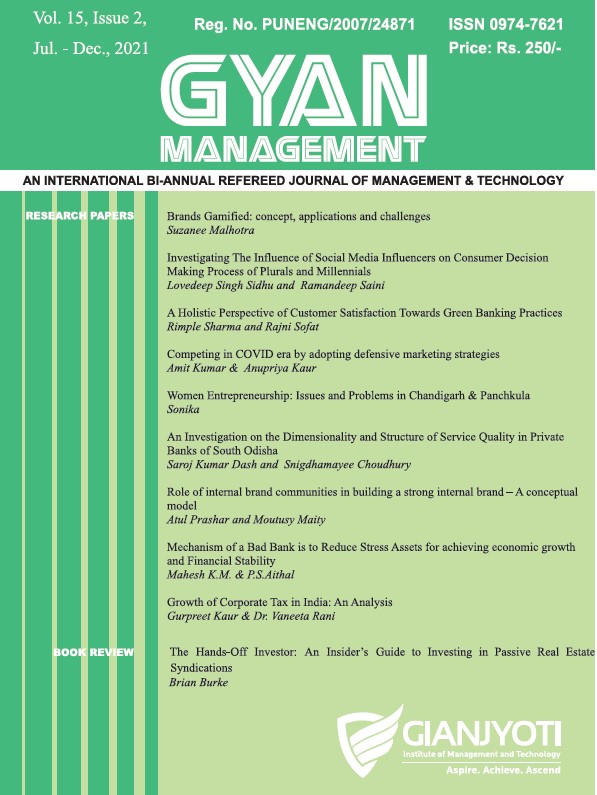Determinants of Capital Structure: Evidence from Indian Manufacturing Industry
Keywords:
Capital structure, pecking order theory, trade off theoryAbstract
This paper analyzes the determinants of capital structure throu9h the extensive review of past research studies as well as throu9h the panel data analysis identifying key determinants of capital structure in manufacturing sector in India durin9 the period of1995-1996 to2007-2008. Analysis of 48 textile and pharmaceutical companies listed on National Stoel< Exchange is carried out. A multiple regression model on panel data to identify statistically significant determinants of capital structure is developed. Panel data analysis reveals that profitability, firm size, cost of debt, tangibility and growth have the significant impact on capital structure decision but liquidity and the tax rate do not influence this decision. The negative relationship between profitability and leverage supports the pecking order theory. The study produces evidence for a positive relalionship between leverage and tangibility, which is highly consistent with trade off theory. The impact of growth opportunities is si9nificant and negative for Indian manufacturing industry suggesting that high growth firms prefer less debt. The study is limited to the 48 companies representing the manufacturing sector. Research can be extended across industries and sectors.
Downloads
Downloads
Published
Issue
Section
License
Copyright (c) 2022 Gyan Management Journal

This work is licensed under a Creative Commons Attribution 4.0 International License.



